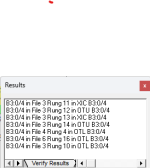Jarrodharms75
Member
I have been doing logic programming and troubleshooting for about 25 years.
I started working for a new company as PLC Application Engineer and I am trying to work through this program and I am seeing the use of the same output latching throughout program latching in 4 different places and I have always been under the impression to not use duplicate outputs in the code. Am I missing something?

I started working for a new company as PLC Application Engineer and I am trying to work through this program and I am seeing the use of the same output latching throughout program latching in 4 different places and I have always been under the impression to not use duplicate outputs in the code. Am I missing something?



